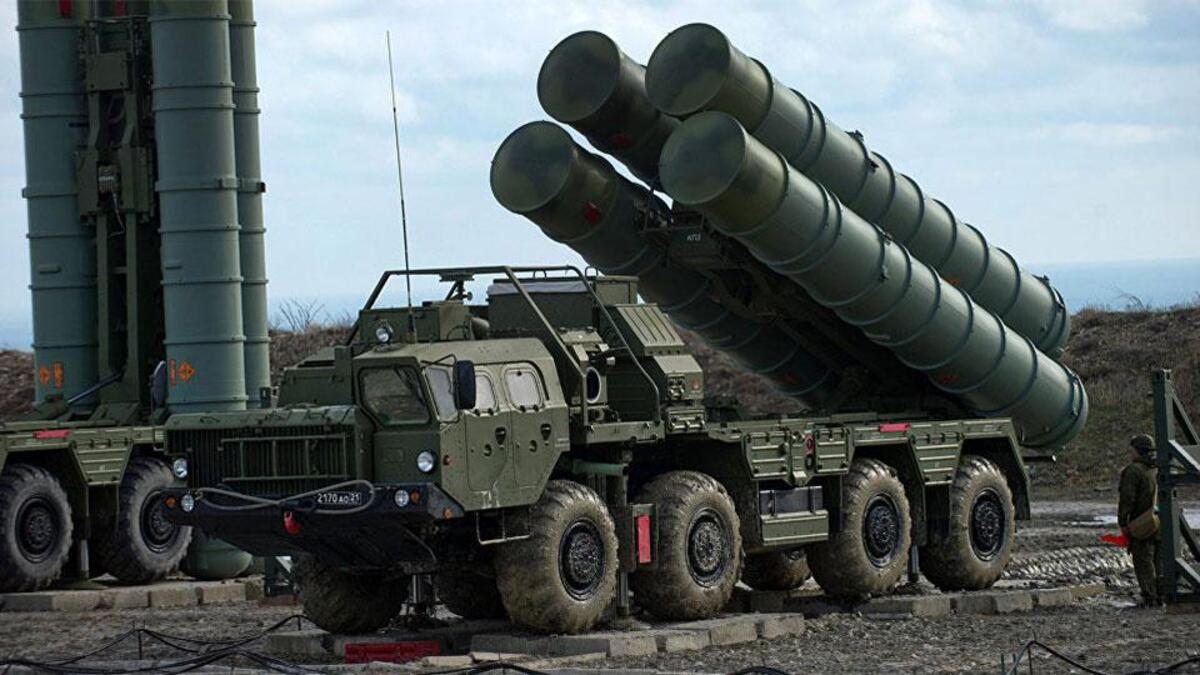Months after Russia promised the delivery of S-400 air defense systems and the Iskander ballistic missiles to Belarus, the Belarusian military finally deployed both weapons on December 19, bolstering its combat capability.
Putin OKs ‘Limitless’ Defence Budget, Boosting Military Size To 1.5 Million; Have West’s Sanctions Failed To Cripple Russia?
India’s Su-30 MKI, Japan’s F-15 Fighters To Hold 1st Ever Air Combat Drills Next Year Amid China’s Belligerence
Lukashenko clarified that “this is not a threat to anyone. We should secure the Belarusian state. You have made a very important decision in supporting Belarus,” he told Vladimir Putin, who was on a rare visit to Minsk, sparking fears that Belarus could soon become part of the war against Ukraine.
With the deployment of the S-400 air defense systems, Belarus becomes only the fourth country in the world to field this state-of-the-art defense system. The operational missile range of the S-400 system is up to 400 kilometers, and the surveillance range is up to 600 kilometers.
However, President Lukashenko’s statement announcing the deployment merits a close examination. Despite receiving this advanced air defense system that would allow it to shoot down any hostile projectile, Lukashenko emphasized the importance of the Iskander ballistic missiles.
Belarusian President Alexander Lukashenko said on December 19, “Today, we have deployed the S-400 systems and, most importantly, the Iskander system that you have handed over to us, as you promised six months ago.” The key word here is “most important.”

It was first in June this year that Russian President Vladimir Putin said in a televised meeting with Belarusian President Alexander Lukashenko that his country would supply Belarus with Iskander-M missile systems within a few months.
At the time, Lukashenko had told Putin that Belarus was concerned by the “aggressive,” “confrontational,” and “repulsive” policies of its NATO neighbors Lithuania and Poland. Making a pitch for Iskander missiles, Lukashenko said, “Minsk must be ready for anything, even the use of serious weaponry to defend our fatherland from Brest to Vladivostok.”
Belarus, for one, is a staunch Russian ally and has frequently been in the news for the possibility of joining the war as the country shares a border with Ukraine. Russian troops had carried out mammoth military exercises with Belarus in the run-up to the invasion of Ukraine in February 2022.
This is why the Russian promise to deliver Iskander nuclear-capable ballistic missiles to Belarus had caused deep-seated anxiety in the West. There have been concerns that Russia could use the Belarusian border to launch attacks on Ukraine, opening another front in addition to the South and the East.
What Is It About The Iskander Ballistic Missile?
The Belarusian President asked Putin to arm his military so that it could give a “symmetrical response” to overflight missions flown by NATO nuclear-armed aircraft.
While Putin dismissed the need for an immediate symmetrical response, he assured Lukashenko that the Su-25 fleet of the Belarusian Air Force would be upgraded in the future if necessary.
The most significant promise, however, was that of Iskander ballistic missiles for Belarus. The 9K720 Iskander-M short-range ballistic missile (SRBM), designated as SS-26 “Stone” by NATO, has been extensively deployed by Russia in the ongoing conflict with Ukraine.
With a known maximum flight distance of 310 miles (almost 500 kilometers), each launcher vehicle can carry two missiles.
The most noteworthy fact about this missile, and likely the most worrisome for Ukraine and the West, is that it can carry conventional and nuclear payloads. The 9M723 missile has a payload capacity of 1,500 pounds and can deliver high explosives, cluster munitions, fuel-air, bunker-busting, and nuclear warhead options.
The use of this missile in Ukraine has revealed that it employs penetration aids (PENAIDs), which take the form of mortar-like decoys used to fool enemy radars and interceptor missiles.
This complex has an extremely low non-nuclear usage barrier. In the case of an Iskander strike on airfields, ammunition stores, and other critical infrastructure, the range of the missiles and their ability to defeat missile defense can rapidly cause enormous damage to the NATO air forces.
According to the US-based Center for Strategic and International Studies (CSIS), Iskander missiles are made to fly on a low trajectory and maneuver while in flight to hit targets with an accuracy of two to five meters, which is intended to deceive missile defenses. This would arm Belarus with a never-before-seen capability.
According to a data sheet from the Nuclear Threat Initiative, Belarus received 81 Soviet SS-25 “Sickle” road-mobile intercontinental ballistic missiles (ICBM) and an undetermined number of tactical nuclear warheads during the fall of the Soviet Union in 1991.
After returning the ICBM warheads to Russia in November 1996 and the tactical nuclear weapons to Russia by May 1993, it has no nuclear weapons.
However, the possession and deployment of the Iskander missile could complicate matters as the deployment of a nuclear-capable weapon in an otherwise non-nuclear country could lead to escalations with NATO. The situation is even more precarious due to concerns that Belarus could enter the war from the Russian side, even though Russian officials have refuted such claims.
Russian officials announced earlier that the production of Iskander missiles and launchers had increased significantly amid rumors that the stockpiles were nearing exhaustion.
The transfer to Belarus could, at least for now, dispel claims of Iskander shortages. However, the actual estimate of missiles in Russian inventories would be impossible to verify.
Putin’s rare visit to Minsk and deploying these sophisticated weapon systems by the Belarusian military has caused bickering within the Ukrainian military establishment. The Ukraine Armed Forces are already reinforcing and securing the border with Belarus to avert any possible attack.
- Contact the author at sakshi.tiwari9555 (at) gmail.com
- Follow EurAsian Times on Google News